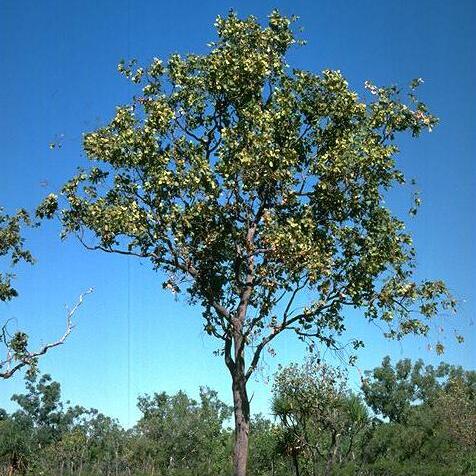Tree to 12 m, spreading. Bark irregularly tessellated or flaky throughout, grey or grey-brown. Juvenile leaves very shortly petiolate, oblong-lanceolate, 5–8 cm long, 4–5 cm wide, with red-brown radiating hairs and short bristles. Leaves on mature trees opposite, petiolate or subsessile, oblong-ovate, obtuse and cuspidate or acute to acuminate, cordate; lamina 8–15 cm long, 3–7 cm wide, with radiating hairs and short bristles, red-brown to grey-green, often undulate, ±discolorous; lateral veins at 50°–65°; petiole up to 5 mm long. Umbels 3–7-flowered; peduncle terete to compressed, 10–15 mm long, with rust-brown bristle-like glands; pedicels up to 4 mm long. Buds clavate to pyriform, 10–12 mm long, 5–10 mm wide. Fruits shortly pedicellate, ovoid, subglobular or suburceolate, 18–25 mm long, 15–18 mm wide. Seeds winged at one end, yellow-brown.
More
A small tree. It grows 7-12 m tall. It has crooked branches. The young branches are hairy. The leaves occur opposite one another and are covered with rough scales. The leaves have 2 lobes at the base. The blade is 8-20 cm long by 3.5-9 cm wide. They have very short stalks. The flowers are large and white in groups of 3-7. They are near the ends of branches. The fruit is an urn shaped woody capsule. This is 1.7-3.5 cm long by 1.5-2.2 cm wide.


